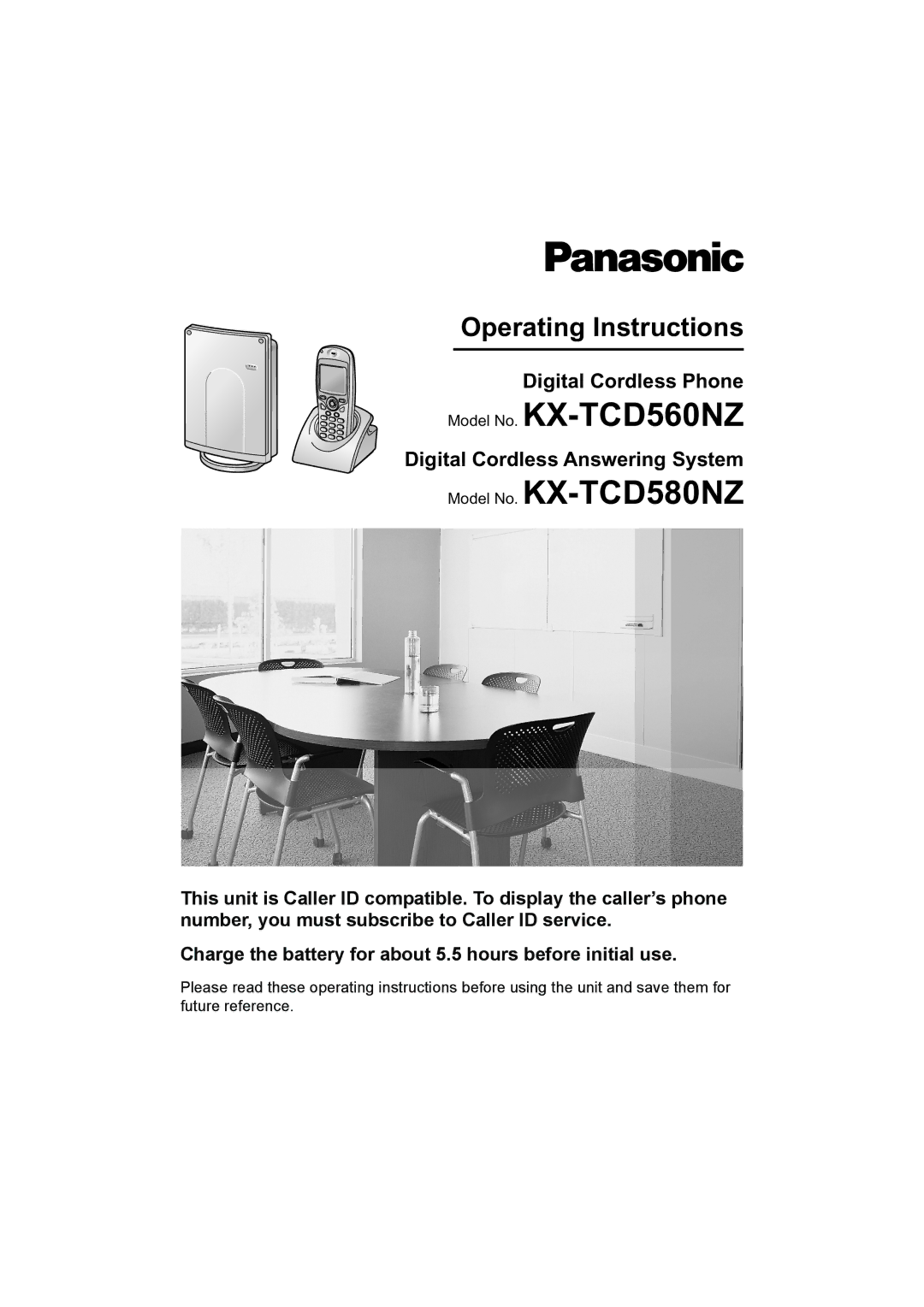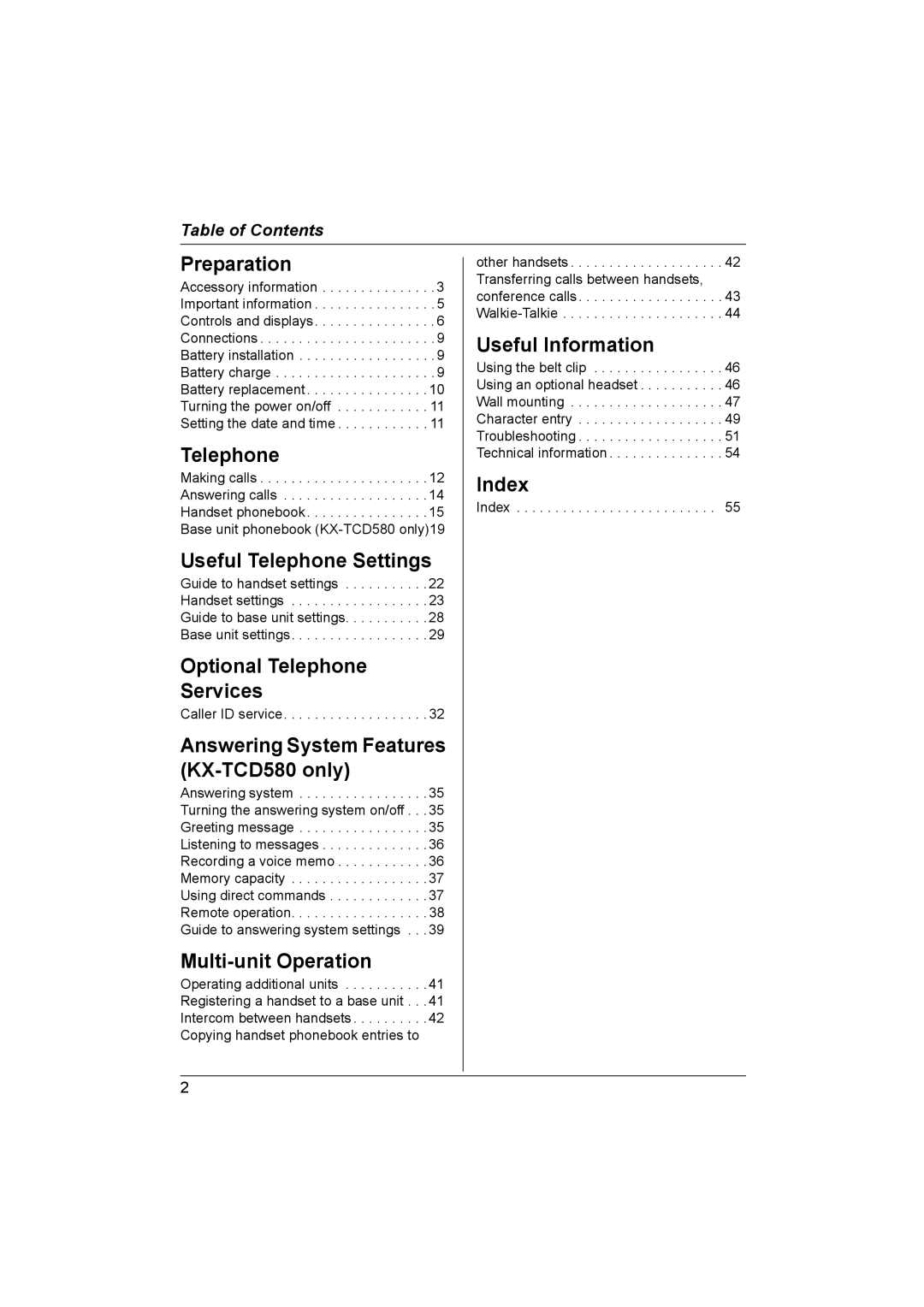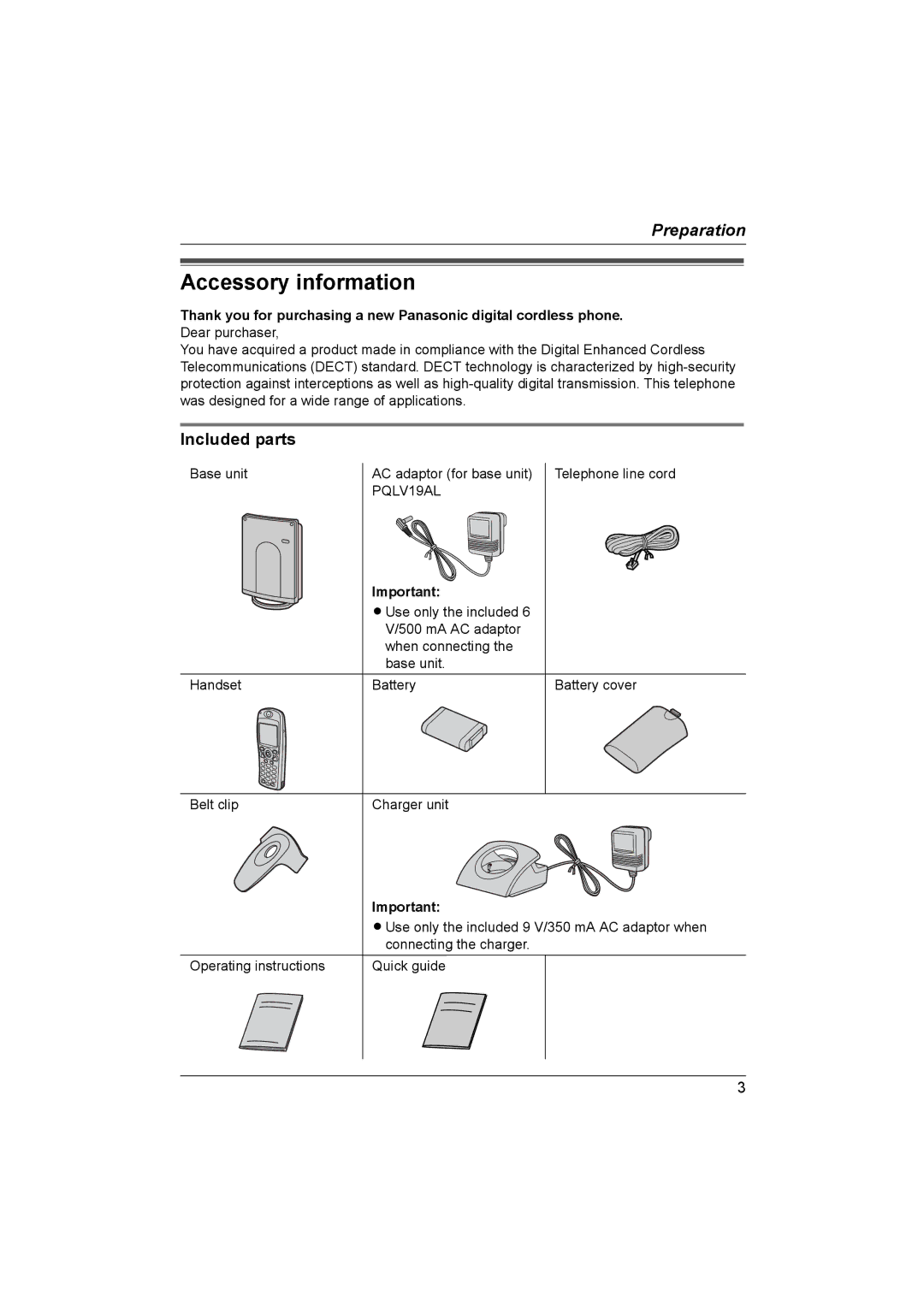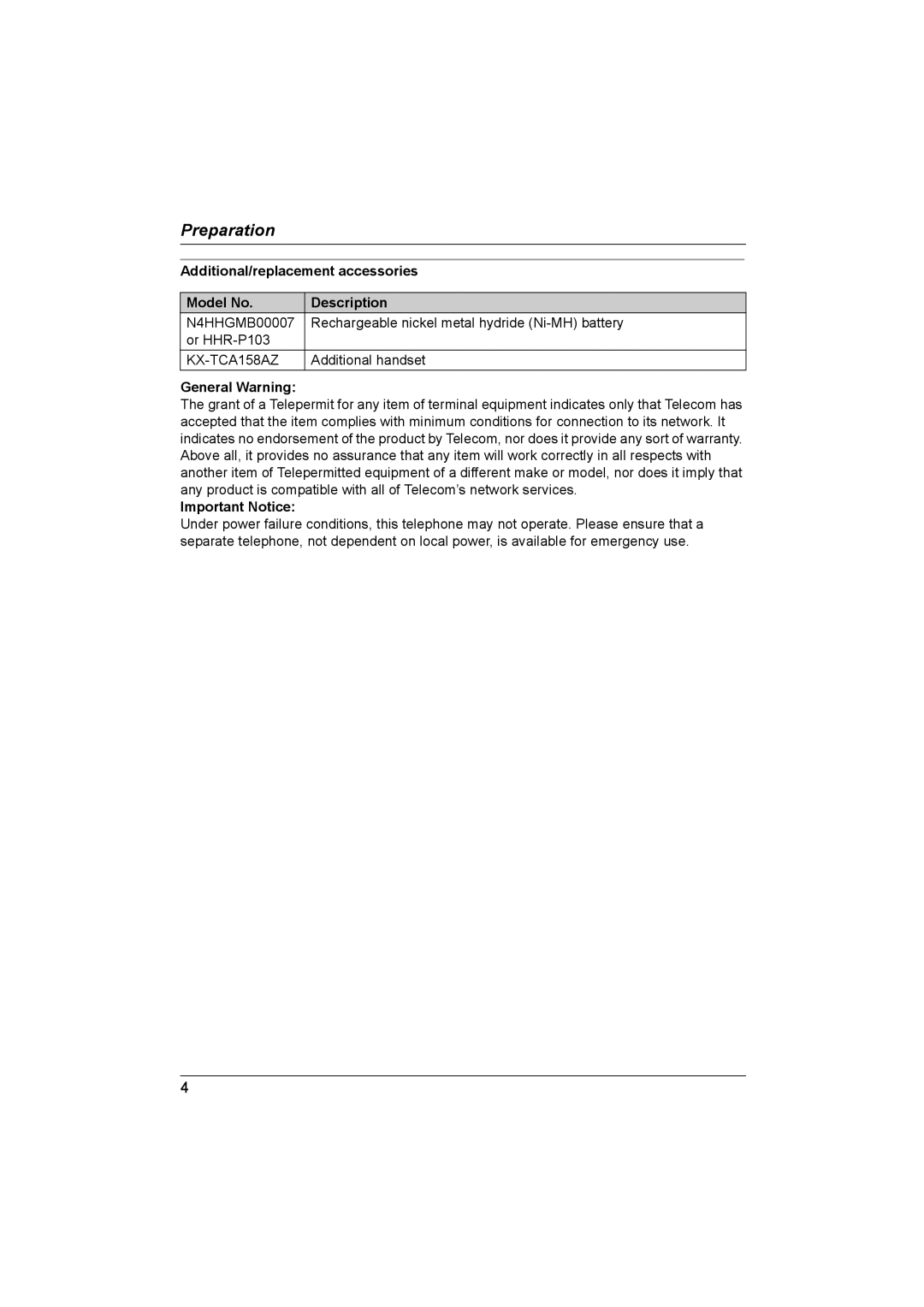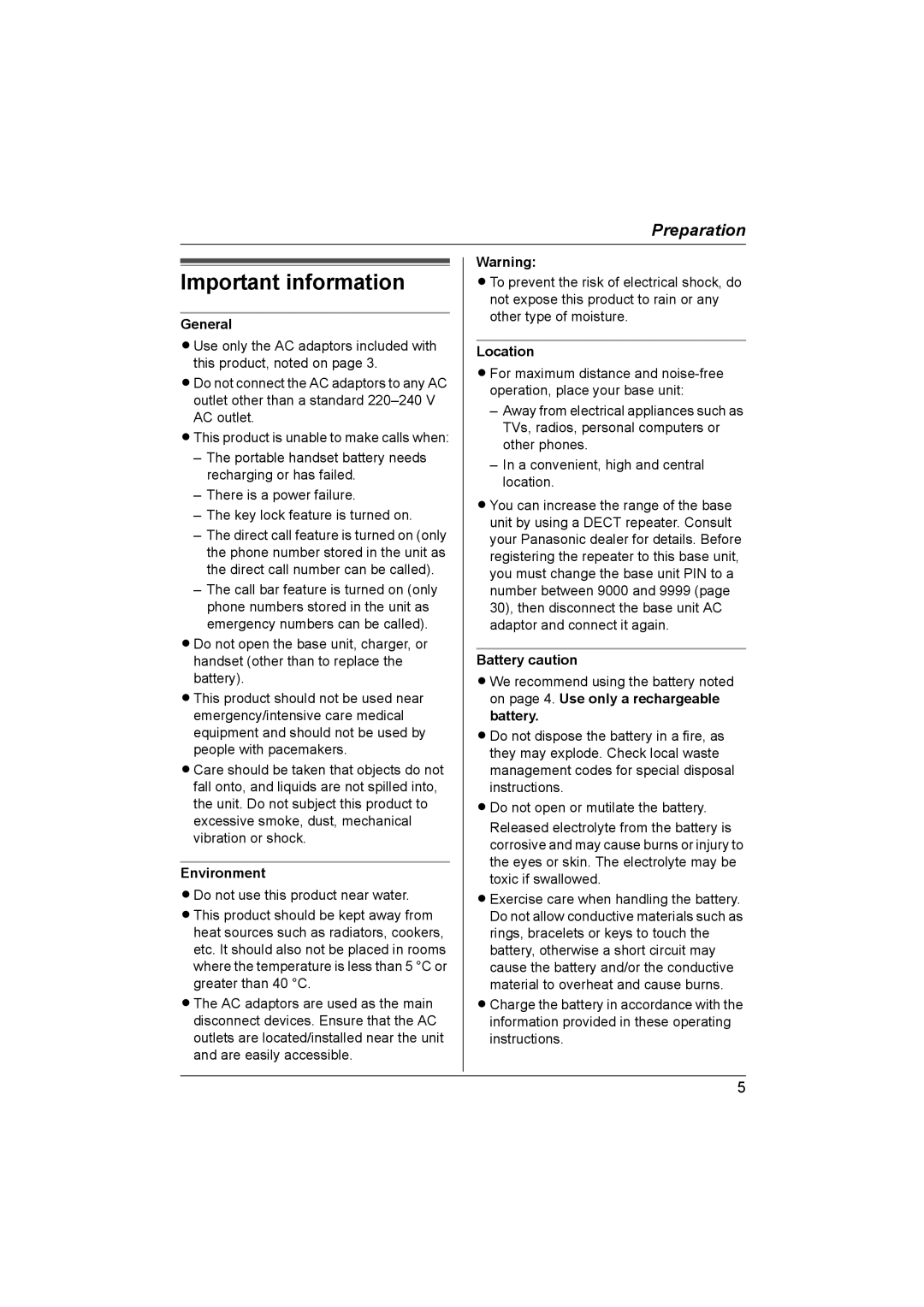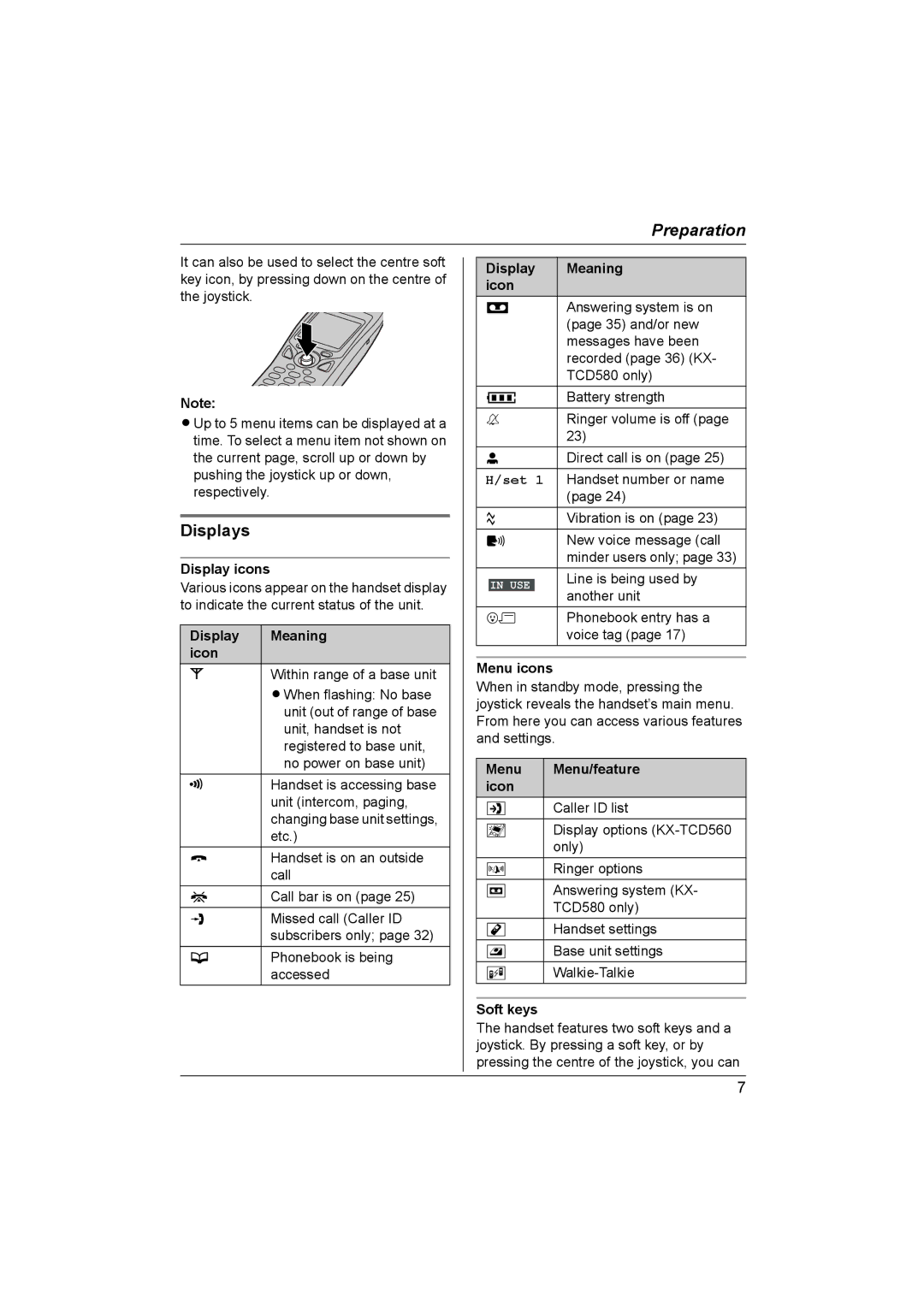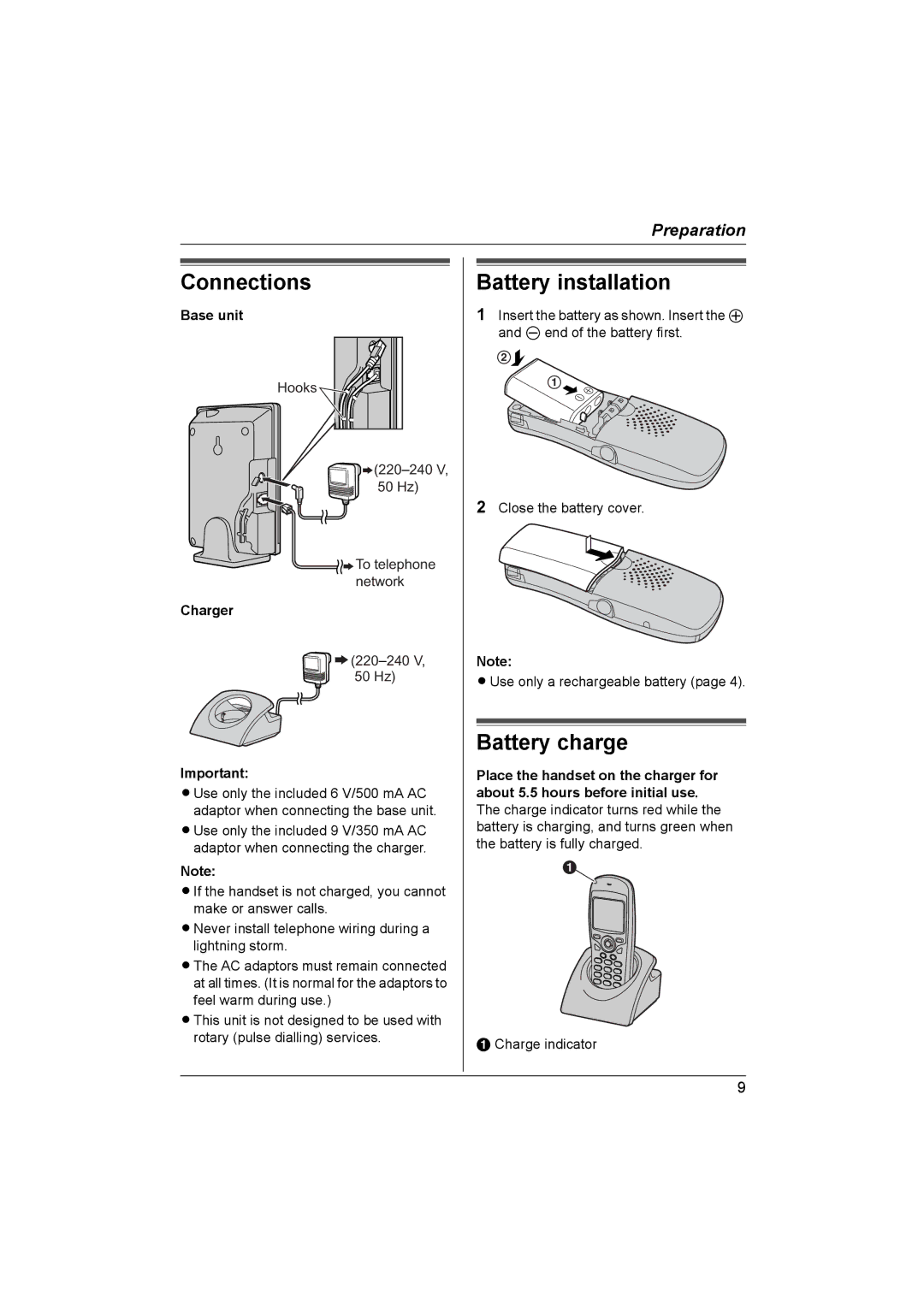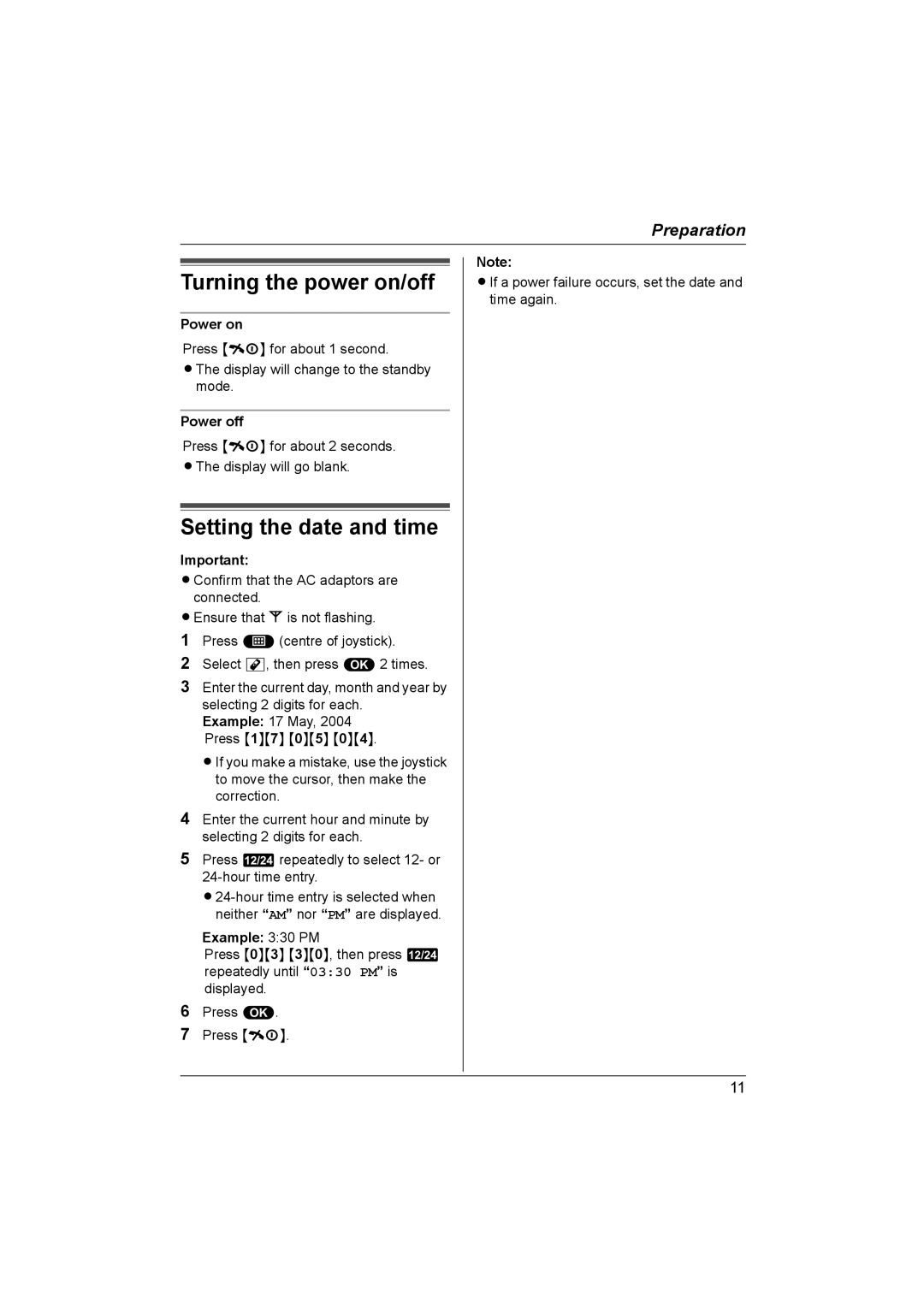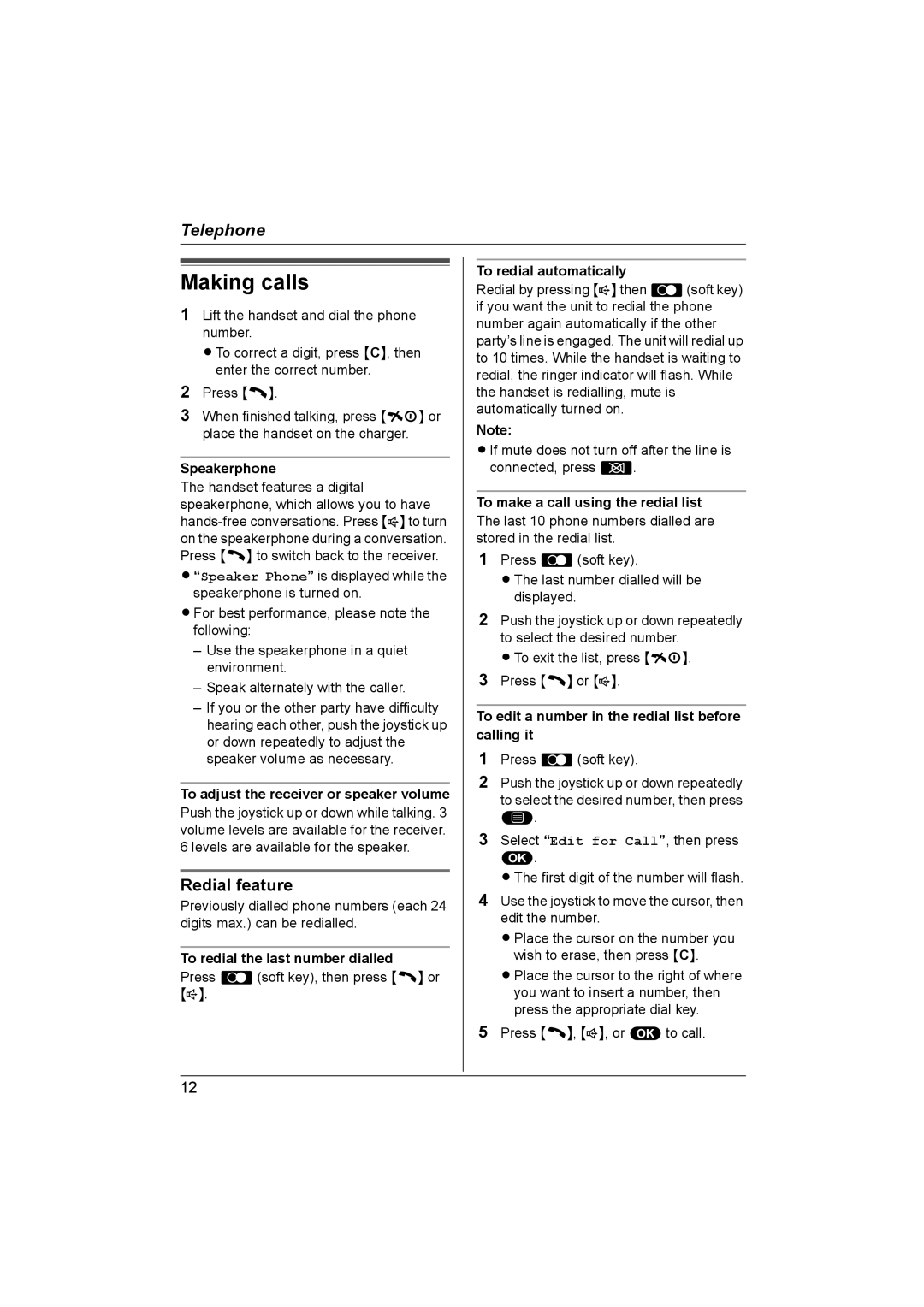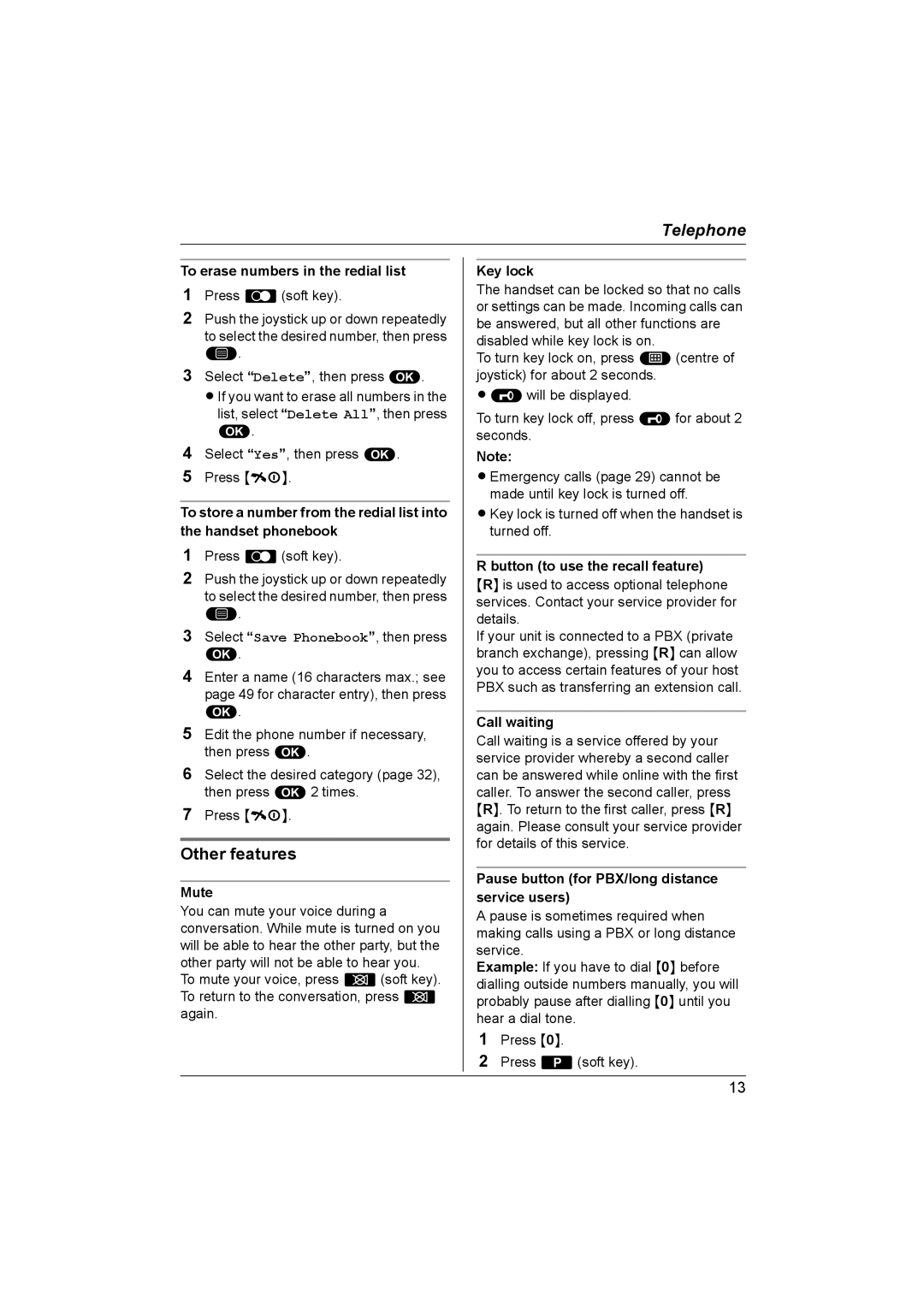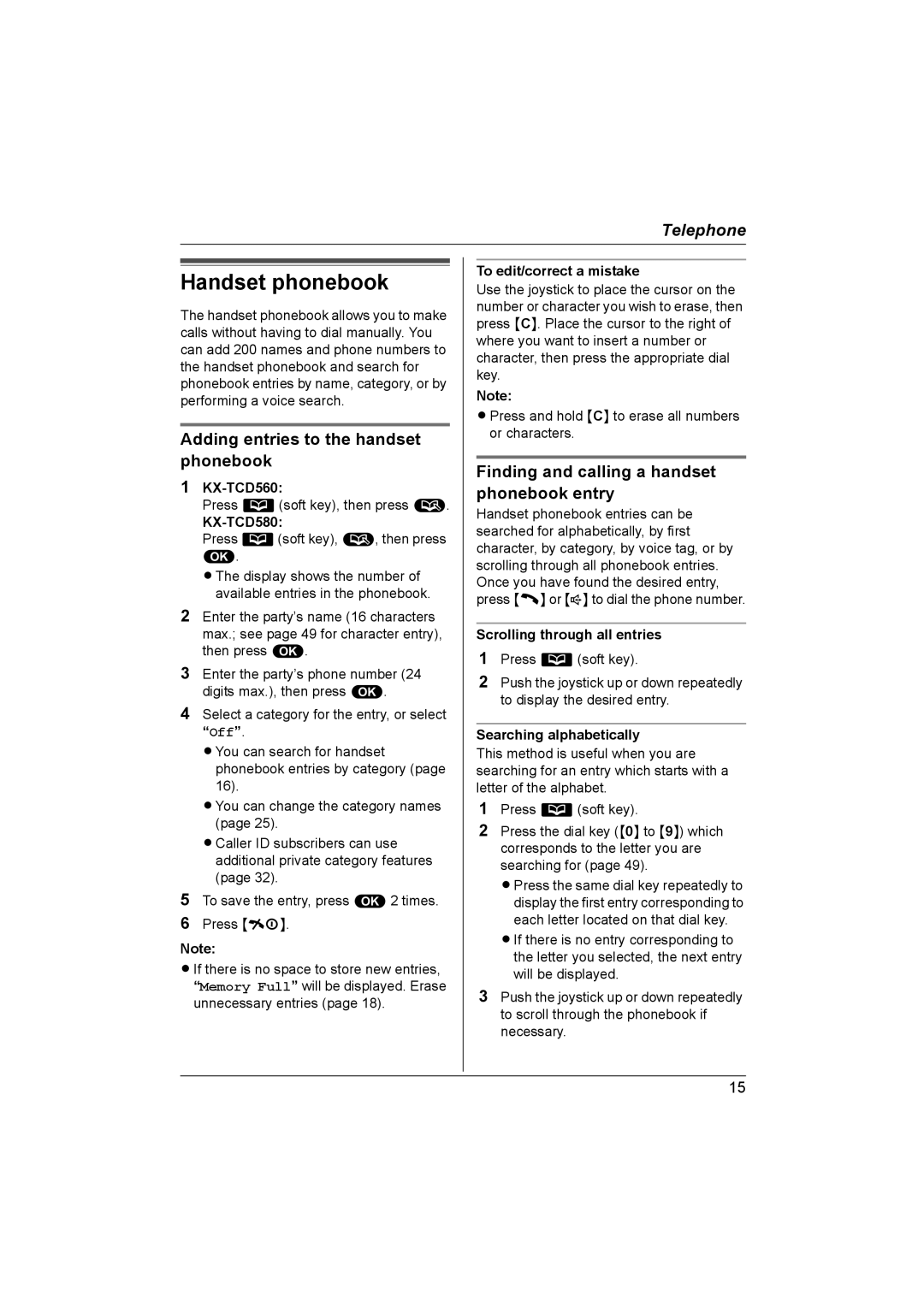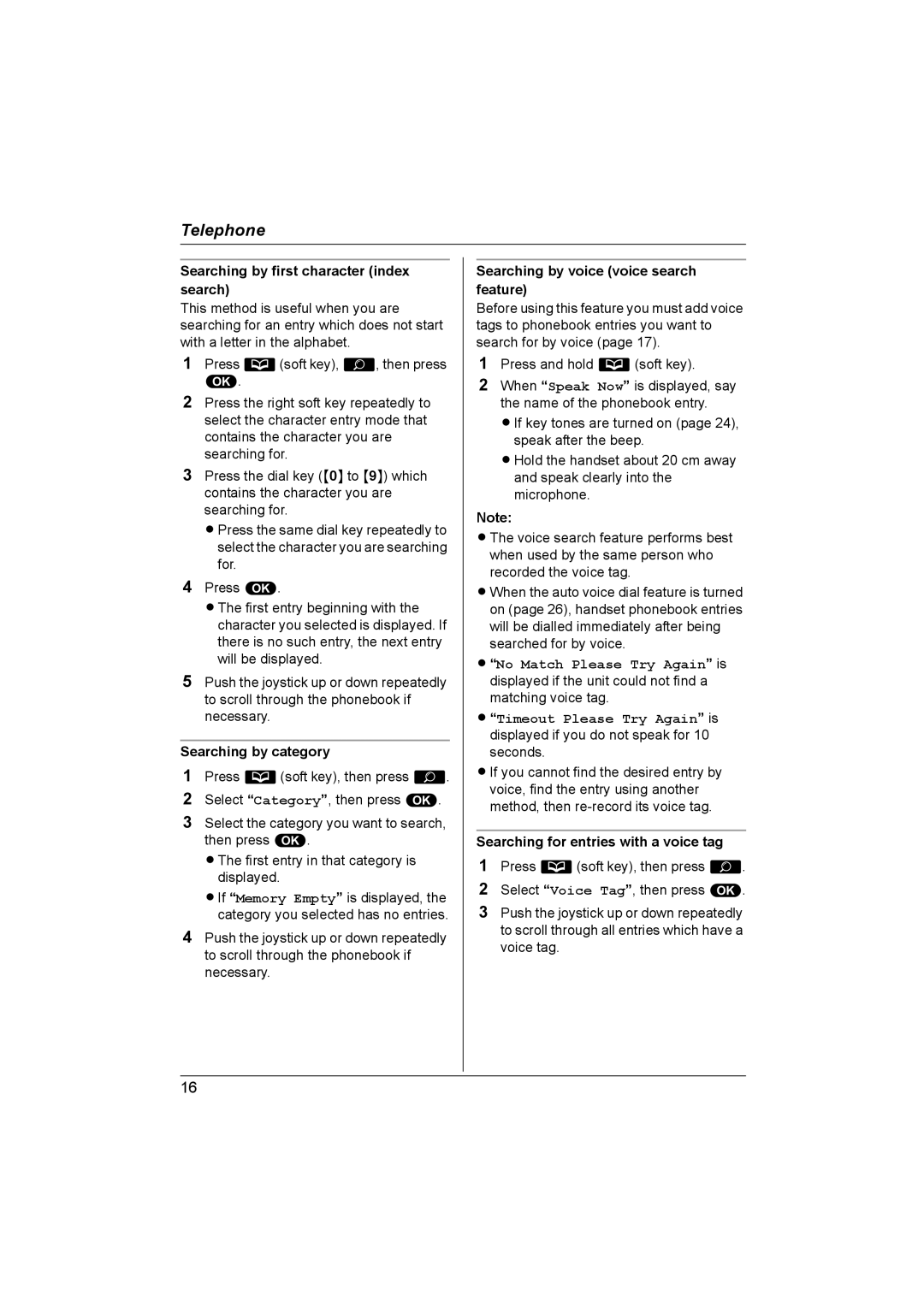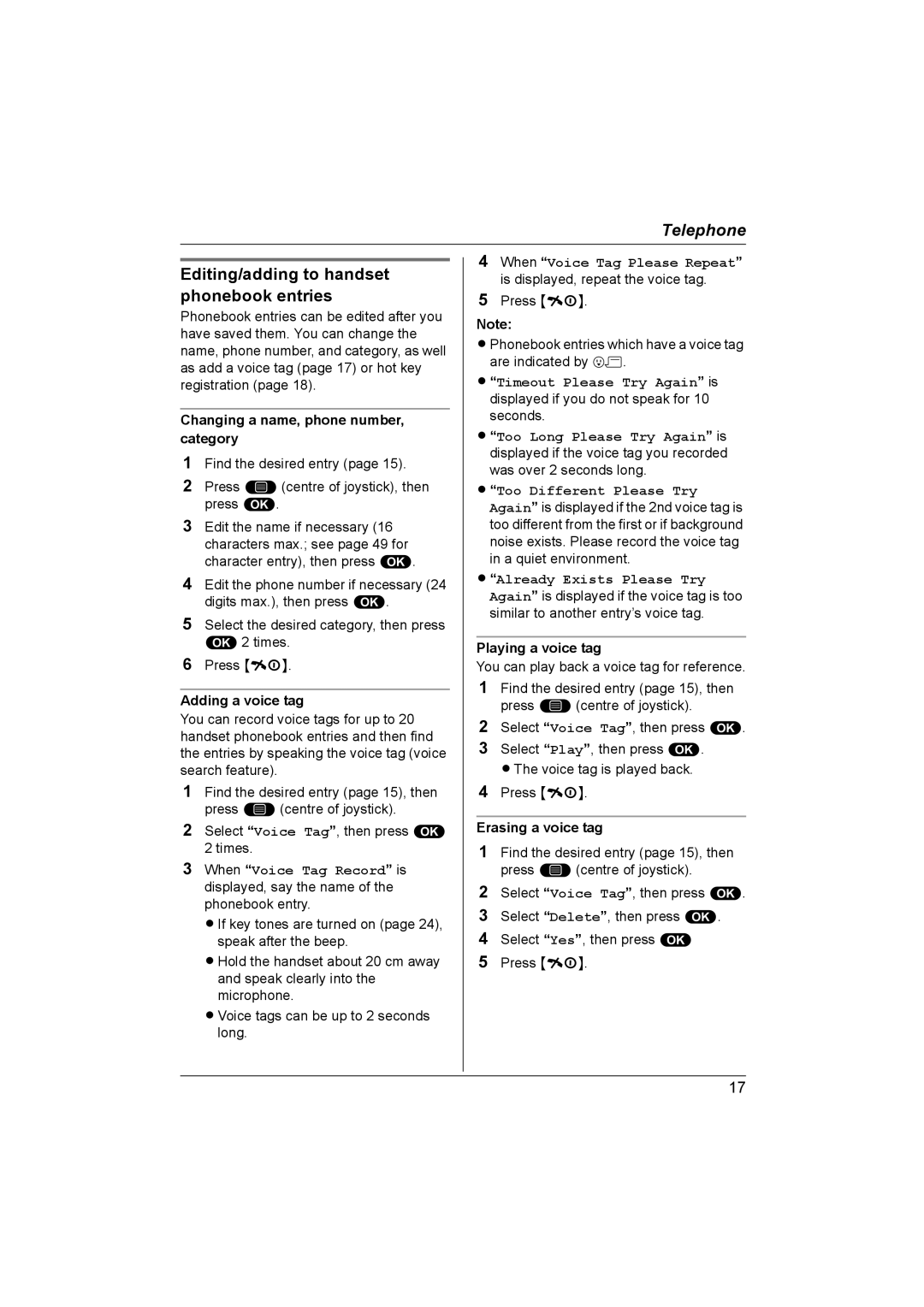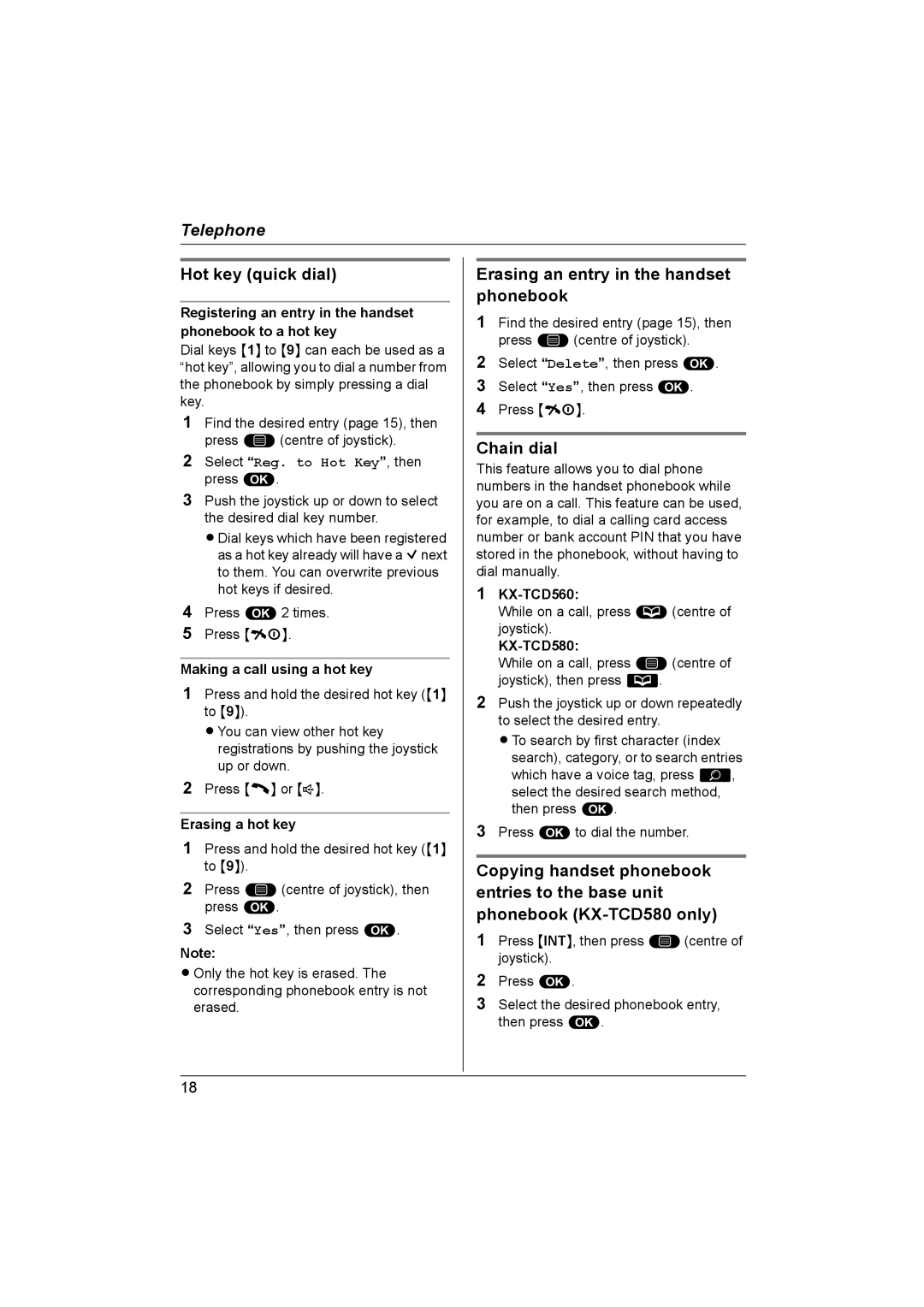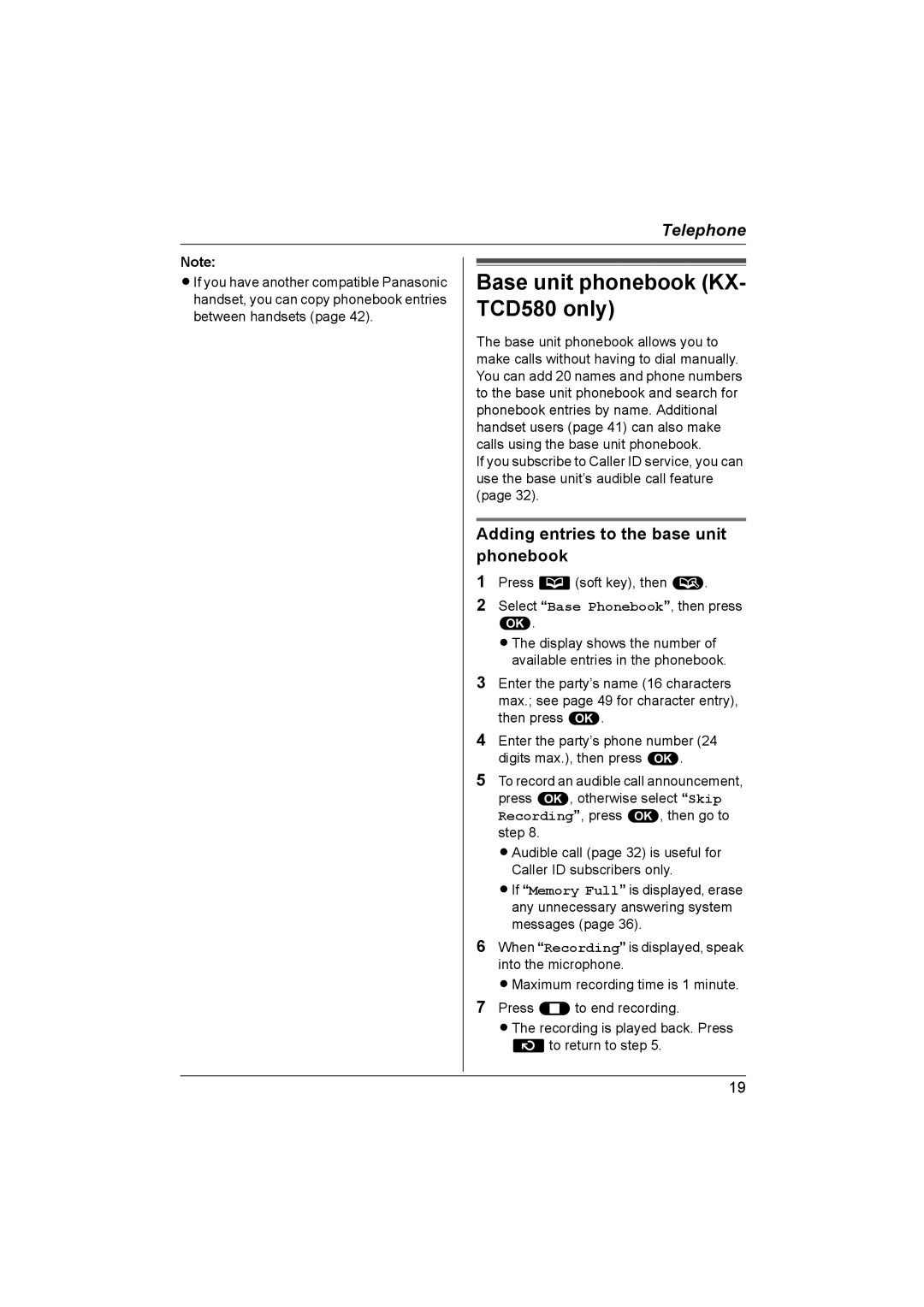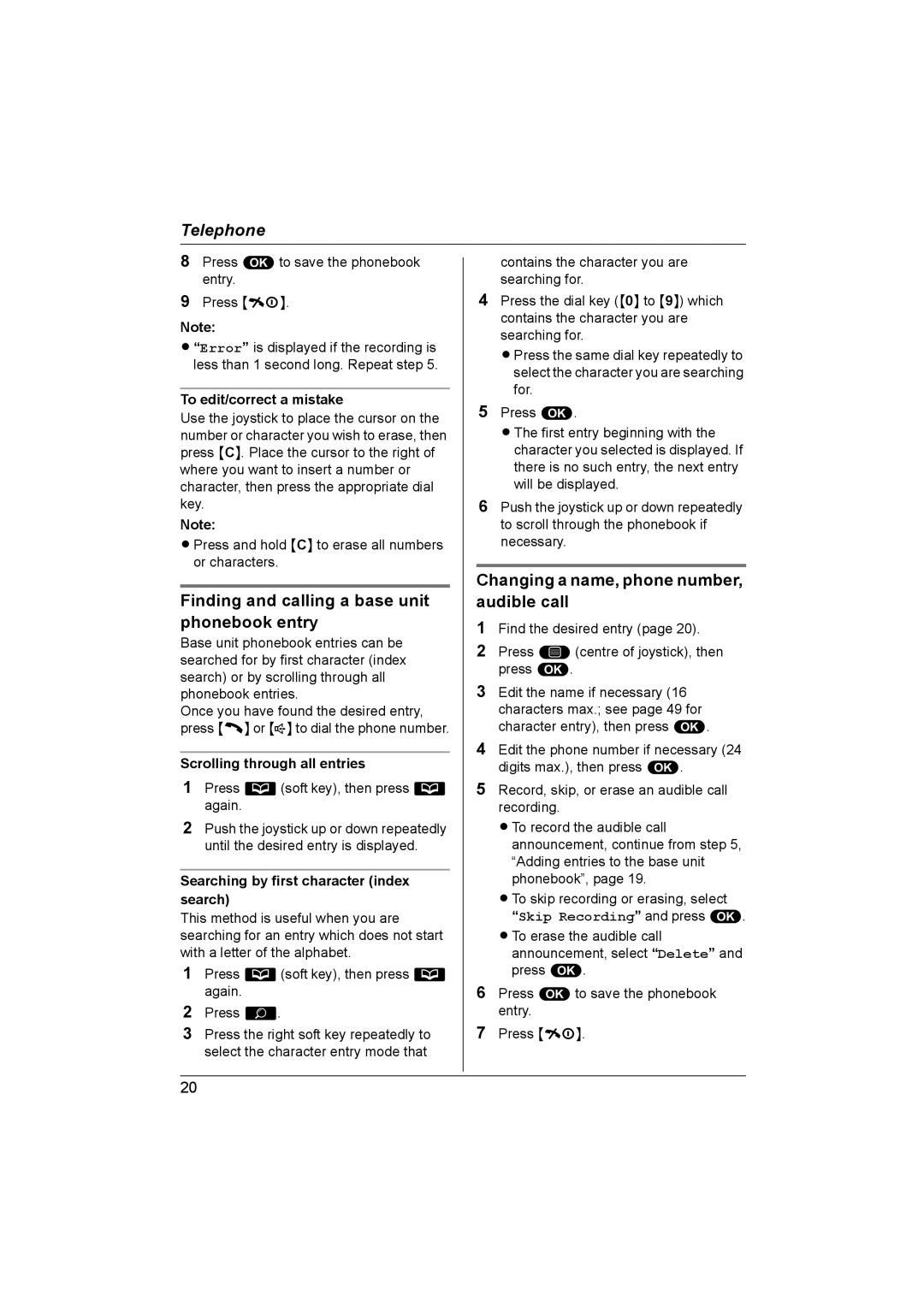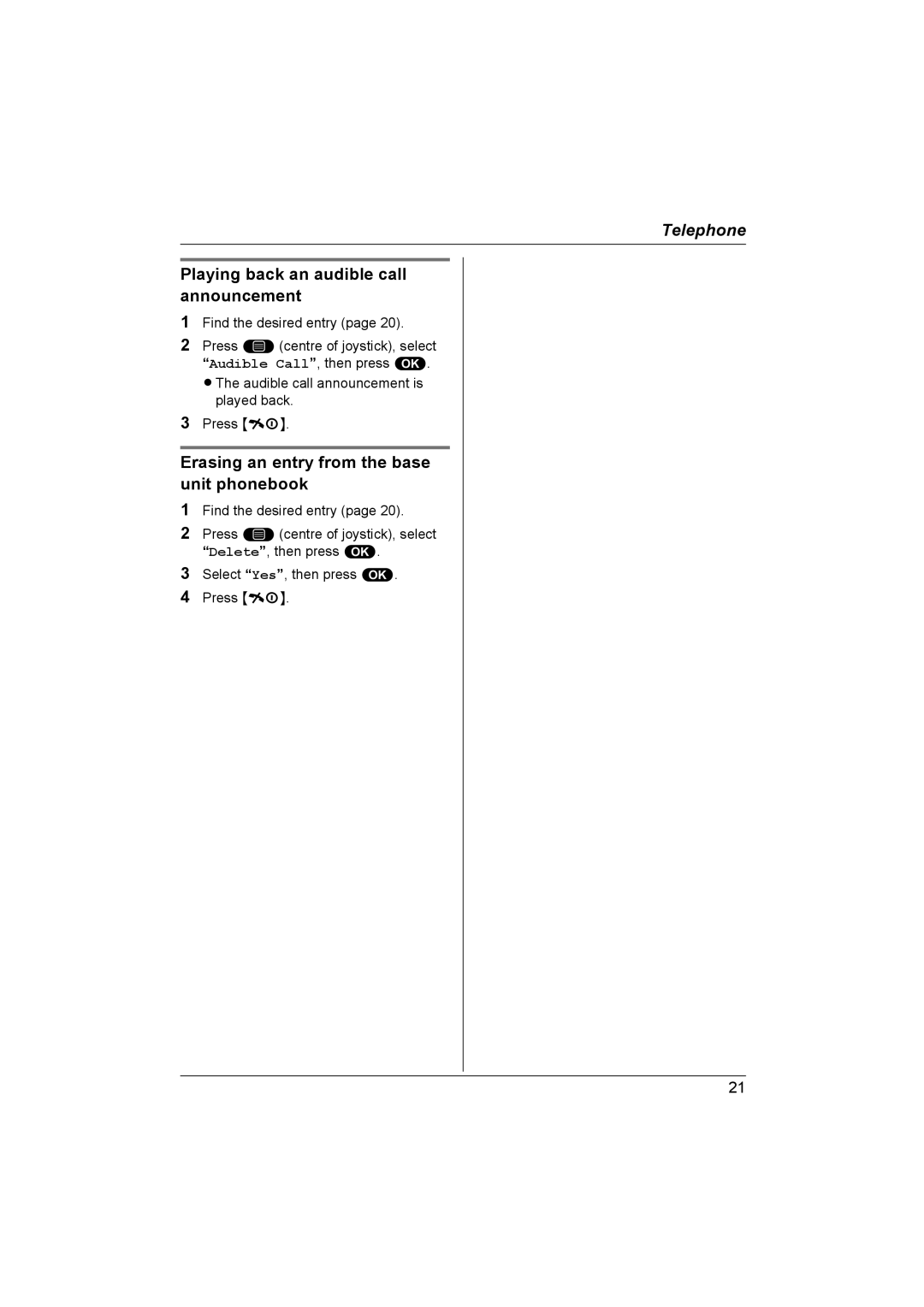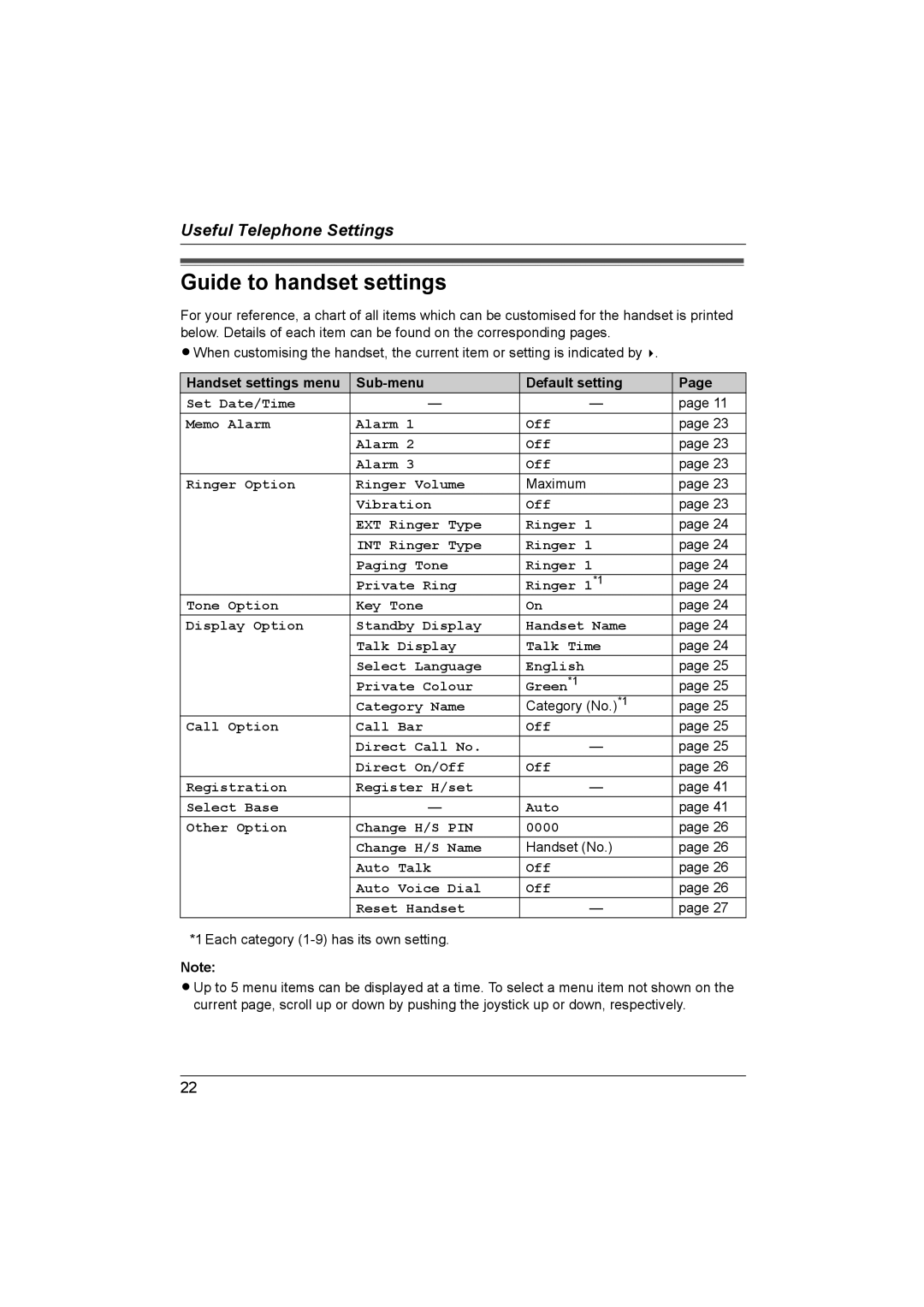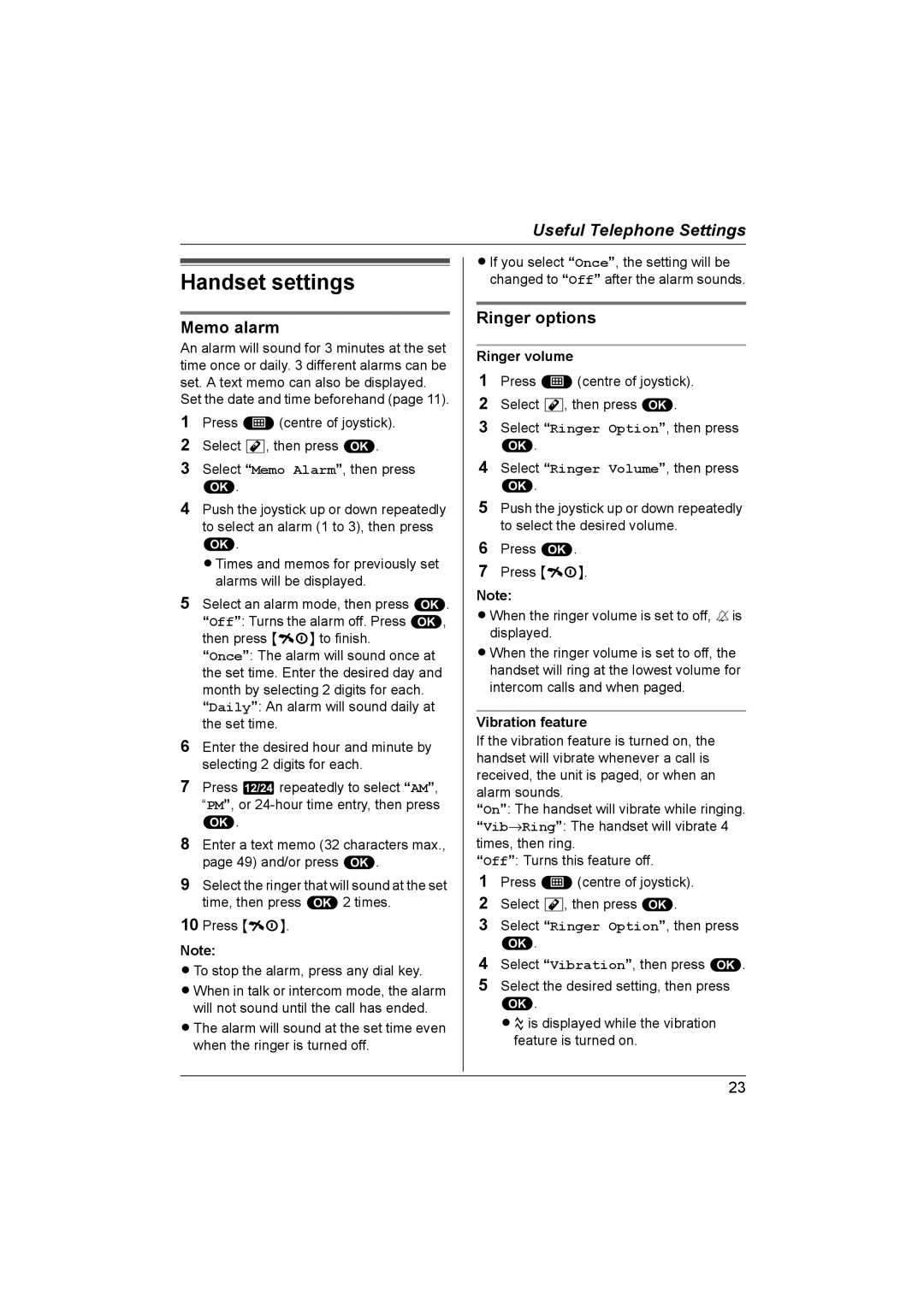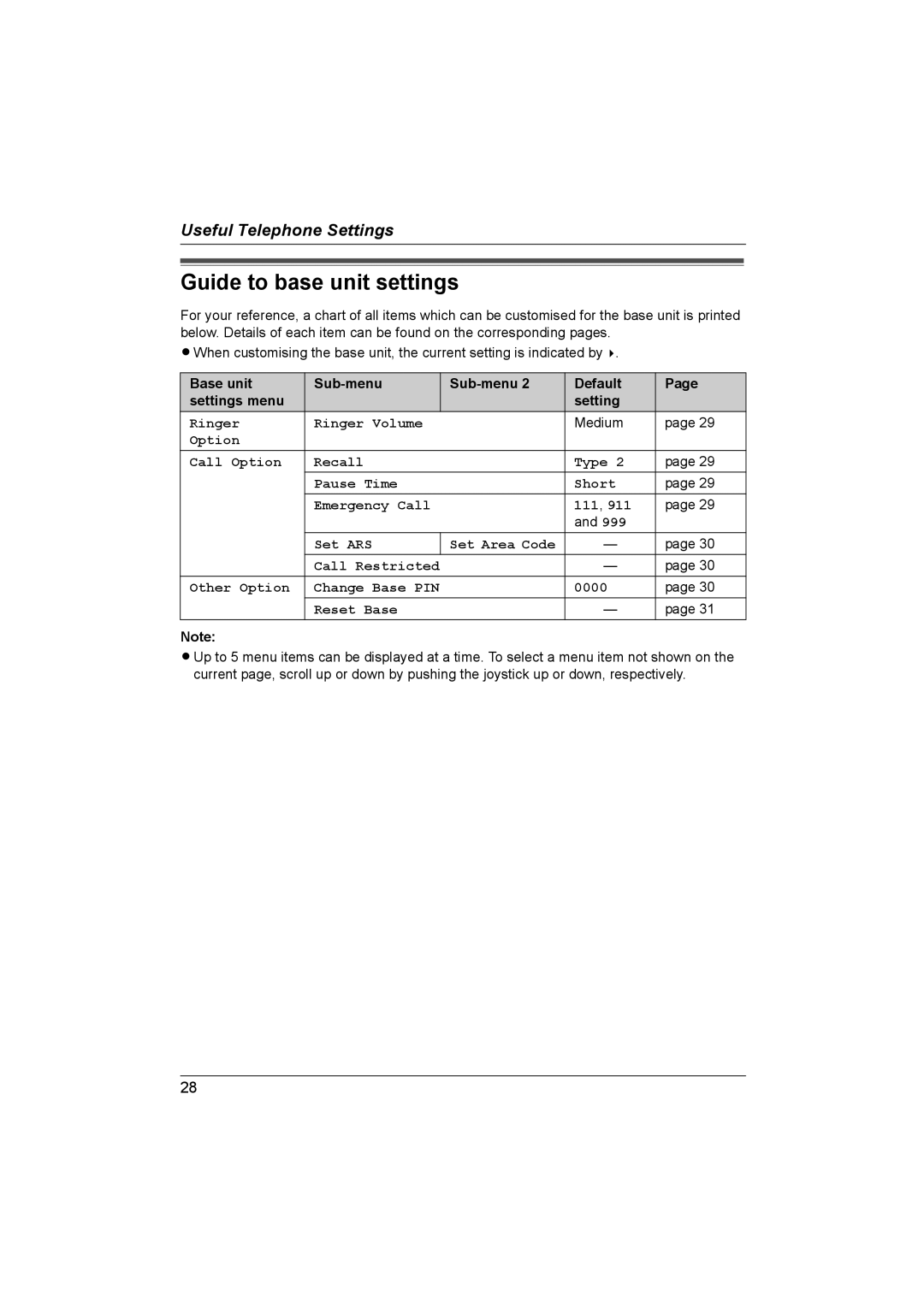
Preparation
Important information
General
LUse only the AC adaptors included with this product, noted on page 3.
LDo not connect the AC adaptors to any AC outlet other than a standard
LThis product is unable to make calls when:
–The portable handset battery needs recharging or has failed.
–There is a power failure.
–The key lock feature is turned on.
–The direct call feature is turned on (only the phone number stored in the unit as the direct call number can be called).
–The call bar feature is turned on (only phone numbers stored in the unit as emergency numbers can be called).
LDo not open the base unit, charger, or handset (other than to replace the battery).
LThis product should not be used near emergency/intensive care medical equipment and should not be used by people with pacemakers.
LCare should be taken that objects do not fall onto, and liquids are not spilled into, the unit. Do not subject this product to excessive smoke, dust, mechanical vibration or shock.
Environment
LDo not use this product near water.
LThis product should be kept away from heat sources such as radiators, cookers, etc. It should also not be placed in rooms where the temperature is less than 5 °C or greater than 40 °C.
LThe AC adaptors are used as the main disconnect devices. Ensure that the AC outlets are located/installed near the unit and are easily accessible.
Warning:
LTo prevent the risk of electrical shock, do not expose this product to rain or any other type of moisture.
Location
LFor maximum distance and
–Away from electrical appliances such as TVs, radios, personal computers or other phones.
–In a convenient, high and central location.
LYou can increase the range of the base unit by using a DECT repeater. Consult your Panasonic dealer for details. Before registering the repeater to this base unit, you must change the base unit PIN to a number between 9000 and 9999 (page 30), then disconnect the base unit AC adaptor and connect it again.
Battery caution
LWe recommend using the battery noted on page 4. Use only a rechargeable battery.
LDo not dispose the battery in a fire, as they may explode. Check local waste management codes for special disposal instructions.
LDo not open or mutilate the battery.
Released electrolyte from the battery is corrosive and may cause burns or injury to the eyes or skin. The electrolyte may be toxic if swallowed.
LExercise care when handling the battery. Do not allow conductive materials such as rings, bracelets or keys to touch the battery, otherwise a short circuit may cause the battery and/or the conductive material to overheat and cause burns.
LCharge the battery in accordance with the information provided in these operating instructions.
5
